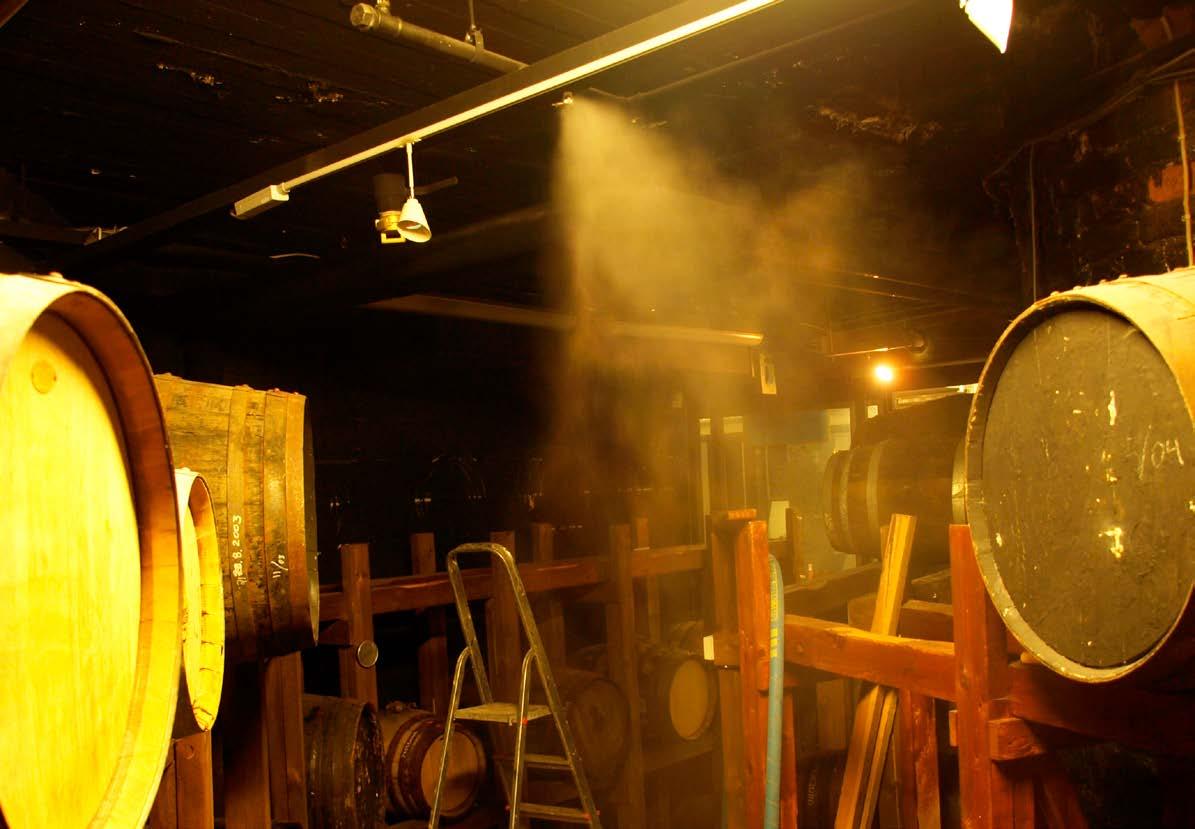
5 minute read
Technology | Humidity
THE PAY-OFFS OF HUMIDITY MANAGEMENT
CONTROLLING HUMIDITY LEVELS IS ONE OF THE MOST SIGNIFICANTLY OVERLOOKED ISSUES IN MODERN INDUSTRIAL ACTIVITY, BUT HUMIDITY CONTROL TECHNOLOGY IS THE MOST COSTEFFECTIVE AND ENVIRONMENTALLY RESPONSIBLE WAY TO TACKLE MANY PROBLEMS WIDESPREAD THROUGHOUT THE PRODUCTION INDUSTRY, EXPLAINS LINDSEY HENDERSON SALES DIRECTOR AT HUMIDITY SOLUTIONS
The ability to control levels of humidity is one of the most significantly overlooked issues in modern industrial activity. Most people don’t notice humidity to anywhere near the same degree that they are aware of other equally basic phenomena, such as heat, cold and draughts.
Humidity can have a profound influence on materials, on production costs, on service and maintenance expenditure and on asset durability, as well as energy consumption and the resultant environmental impact. This applies to virtually all sectors of both manufacturing and service industry.
Uncontrolled Humidity makes nasty things happen: Condensation Condensation is the result of the fact that the air, which inevitably contains a certain level of moisture, has a different temperature from the surfaces with which it comes into contact. Corrosion & rust The combination of humidity and oxygen makes metals corrode, significantly affecting both strength and durability. Iron and steel rust and lose structural integrity, copper is plagued by verdigris, affecting electronics and electrical equipment. Clumping & blockages Powders and granulate absorb humidity particularly easily. They then clump together, affecting quality and causing blockages in processing equipment, as well as providing a fertile breeding ground for bacteria. Inconsistent Product Conditions Seasonal fluctuations in humidity result in inconsistent production conditions that can affect product quality, energy consumption and profit margins.
Today’s operations strive for consistency and conformity across production and over years. Controlling variables such as humidity must be a concern across all steps of the production operation.
A good example of this is how a lack of humidity control in a whisky distillery was causing large losses due to evaporation. In this particular application the whisky was being matured in oak casks over years to get its unique flavour and colour. These wooden casks equalise with the surrounding air, which means liquid transforms outwards when the air humidity in the storage areas is too low, this means great volumes of loss of whisky and of course loss of income.
This ‘angels’ share’ that occurs in the maturing process is now controlled by installing an Adiabatic humidification system which uses a high pressure pump station and controls several zones independently using nozzles mounted on heads that distribute the moisture in a controlled manner. Humidifying to the correct level and stabilizing the humidity in the storage areas have ensured losses are at an absolute minimum and profit margins are no longer affected.
Similarly, as too little humidity can cause issues, there are also many problems associated with too much humidity as stated above, whilst we may know of these problems the important thing is how they are dealt with. The layman’s idea about dealing with humidity and condensation problems is simply to turn up the heating, However, turning up the heating has only very limited effects on humidity.
Heating does not alter the absolute level of humidity present in the air – it only increases the overall temperature. The relationship between the heat content and the water vapour content of
air is relatively complicated and nonlinear, and temperature isn’t as important as air humidity, because of the dew point. This usually results in excessive energy costs to very little effect, because it takes much more energy to heat moistureladen air than to heat dry air. And it does not provide a year-round solution. In virtually all cases, removing moisture from the air using adsorption dehumidification technology is significantly more effective, and makes it possible to work with consistent levels of effectiveness regardless of season or weather.
The heart of this process is a slowly turning rotor coated with silica gel, which absorbs the water molecules present in the air passing through it. In a designated regeneration zone, the saturated rotor is then dried with a separate flow of heated air.
The warm, humid regeneration air is then led away, and the rotor is once again ready to absorb water. The entire process is cyclic, making the system largely self-reliant, with no need for manual intervention and very little need for maintenance. Controlling humidity is ultimately a question of establishing – and keeping – control over parameters that can have big effects on efficiency, reliability and profitability. Effective humidity management gives you: u Better control of parameters that affect your raw materials, production processes, manufacturing installations and fixed assets u Lower costs for service, maintenance and refurbishment u Lower energy costs and reduced environmental impact u Longer service life for buildings and equipment u A way to actively prevent detrimental processes such as rust and corrosion, mould and rot, condensation, electrical faults, and spoilt materials and products. Humidity control technology is the most cost-effective and environmentally responsible way to tackle many problems widespread throughout the production industry. It’s an easy, inexpensive way to implement pro-active measures that help make sure you can maintain the value of key structures, processes and other highvalue assets. As all buildings are different, and owners have their own unique requirements, it is wise to get specialist advice to ensure the most appropriate solution.
Lindsey Henderson is sales director and Dehumidification Specialist at Humidity Solutions, with over thirty years’ experience in the humidity control industry. Humidity Solutions is the UK’s leading independent specialist in humidification and dehumidification systems for a wide variety of industrial, commercial and residential applications. The team at Humidity Solutions will design, install, service and maintain bespoke systems to suit each unique requirement.

Award Winning Supplier of Natural Flavourings to the Craft Drinks Industry
Uncle Roy’s have been lovingly hand-crafting award winning, natural food flavours for over 20 years. With over 140 fantastic flavours, Uncle Roy’s is the natural choice for craft drinks brands. All our flavours are available to trade customers of all sizes with no minimum or maximum order amount.

Try Uncle Roy’s Natural Food Essences today and watch your brand fly.
Call us on 01292 263 583













